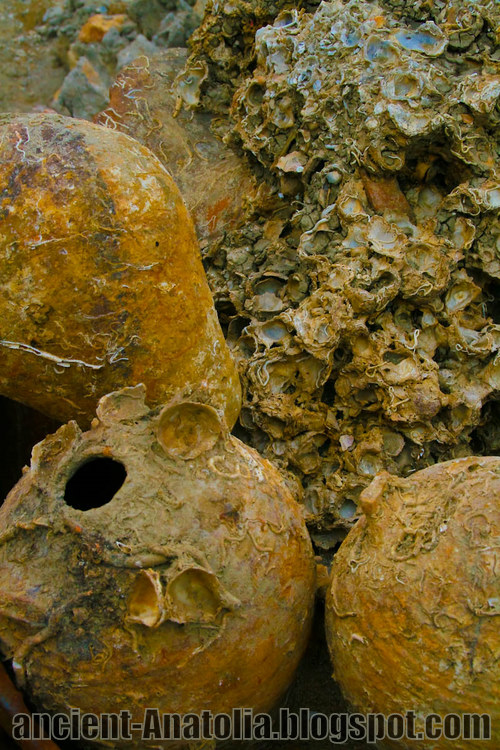
Amphorae, originally uploaded by voyageAnatolia.
Amphorae first appeared on the Syrian coast around the 15th century BC and spread around the ancient world, being used by the ancient Greeks and Romans as the principal means for transporting and storing grapes, olive oil, wine, oil, olives, grain, fish, and other commodities. They were produced on an industrial scale from Greek times and used around the Mediterranean until about the 7th century. Wooden and skin containers seem to have supplanted amphorae thereafter.
They are of great benefit to maritime archaeologists, as amphorae in a shipwreck can often indicate the age of the wreck and geographic origin of the cargo. They are occasionally so well preserved that the original contents are still present, providing invaluable information on the eating habits and trading systems of the ancient Mediterranean peoples. Amphorae were too cheap and plentiful to return to their origin-point and so, when empty, they were broken up at their destination. In Rome this happened in an area named Testaccio, close to Tiber, in such a way that the fragments, later wetted with Calcium hydroxide (Calce viva), remained to create a hill now named Monte Testaccio 45 meters tall and more than 1 km circumference.
High-quality painted amphorae were produced in significant numbers for a variety of social and ceremonial purposes. Their design differs significantly from the more functional versions; they are typified by wide mouth and a ring base, with a glazed surface and decorated with figures or geometric shapes. Such amphorae were often used as prizes. Some examples, bearing the inscription "I am one of the prizes from Athens", have survived from the Panathenaic Festivals held between the 6th century BC to the 2nd century BC. Painted amphorae were also used for funerary purposes. The loutrophoros, a type of amphora, was used principally for funeral rites. Outsize vases were also used as grave markers, while some amphorae were used as containers for the ashes of the dead.